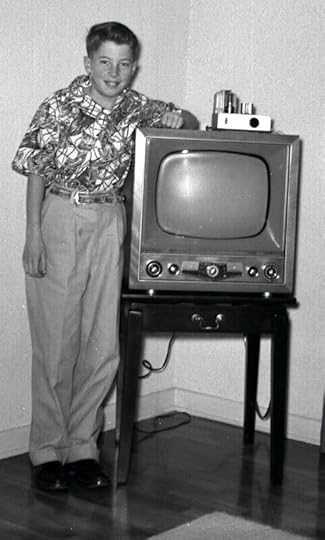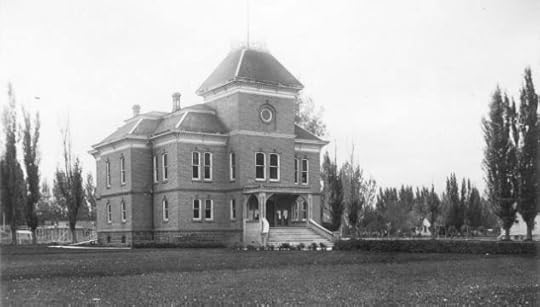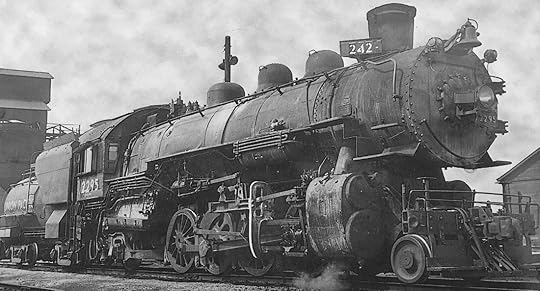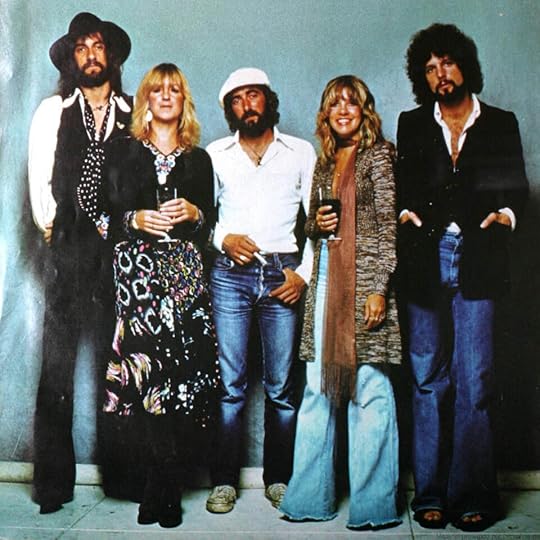Rick Just's Blog, page 7
November 3, 2024
TV, a Passing Fad?
There are always skeptics, even in a progressive industry. The following article appeared in the November 13, 1938, Idaho Statesman.
“Will television be here—in Idaho—this year, or next year, or the year after?
“E.F. McDonald, jr., president of Zenith Radio Corporation, thinks it’s premature introduction of television will retard development of television. He gives the following reasons:
Television is still in the experimental stage, and replacements will make sets sold now obsolete, as receivers must be matched to and synchronized with the transmitting stations.
“The Federal Communications Commission has issued only 18 television licenses, all of which are experimental and noncommercial.
“Many technical problems of television are unsolved. One is elimination of interference by sparkplugs of autos.
“Television programs cannot be broadcast beyond a radius of 30 to 50 miles from the station. Therefore, it would require 2000 transmitting stations to cover the United States.
“The stupendous cost of transmitting television at the present eliminates paying for it by advertising. The cost of one hour’s program each day would be more than one million dollars a
year.”
Somehow, broadcast engineers got over those hurdles. Today there are about 7,900 TV stations in the U.S. In Idaho, where TV was invented, there are 20. But to give Mr. McDonald his due, there probably weren’t many TV sets sold in Idaho in 1939. The first television station didn’t start broadcasting in the Gem State until July 12, 1953, when KIDO-TV (now KTVB) went on the air.

“Will television be here—in Idaho—this year, or next year, or the year after?
“E.F. McDonald, jr., president of Zenith Radio Corporation, thinks it’s premature introduction of television will retard development of television. He gives the following reasons:
Television is still in the experimental stage, and replacements will make sets sold now obsolete, as receivers must be matched to and synchronized with the transmitting stations.
“The Federal Communications Commission has issued only 18 television licenses, all of which are experimental and noncommercial.
“Many technical problems of television are unsolved. One is elimination of interference by sparkplugs of autos.
“Television programs cannot be broadcast beyond a radius of 30 to 50 miles from the station. Therefore, it would require 2000 transmitting stations to cover the United States.
“The stupendous cost of transmitting television at the present eliminates paying for it by advertising. The cost of one hour’s program each day would be more than one million dollars a
year.”
Somehow, broadcast engineers got over those hurdles. Today there are about 7,900 TV stations in the U.S. In Idaho, where TV was invented, there are 20. But to give Mr. McDonald his due, there probably weren’t many TV sets sold in Idaho in 1939. The first television station didn’t start broadcasting in the Gem State until July 12, 1953, when KIDO-TV (now KTVB) went on the air.

Published on November 03, 2024 01:49
November 1, 2024
Bear Track Williams
Not all property owned by the Idaho Department of Parks and Recreation (IDPR) is a state park. One little-known site is called “Bear Track” Williams Recreation Area. Though owned by IDPR, it is managed by the Idaho Department of Fish and Game. That’s because the site is primarily for fishing access.
Two parcels, totaling 480 acres, are along Hwy 93 between Carey and Richfield, near Craters of the Moon National Monument.
Ernest Hemingway’s son, Jack, donated the property to the Idaho Foundation for Parks and Lands in 1973, with the intent that they would turn it over to the Idaho Department of Parks and Recreation when the donation could be used as a match for acquisition or development of state park property.
IDPR took over ownership of two parcels in 1974 and 1975.
Jack Hemingway purchased the property with the intention of making the donation and specifying that it be named for Taylor “Bear Tracks” Williams.
So, who was “Bear Tracks” Williams? He was one of several hunting and fishing guides who began working in the Wood River Valley when Averell Harriman built his famous Sun Valley Resort. The guides often found themselves rubbing shoulders with the wealthy and famous. Williams guided for Ernest Hemingway, and they became good friends. He often accompanied Hemingway to Cuba. They spent many hours together along Silver Creek and the Little Wood River.
One would assume this outdoor guide got his nickname because of his proficiency in tracking or because of some harrowing tale. Nope. He got the nickname because he walked with his toes pointed out.
“Bear Tracks” Williams Recreation Area is prized for its angling opportunities in the sagebrush desert. Fly fishing there is catch and release. There has been virtually no development on the site since Jack Hemingway donated it more than 40 years ago, which is probably just the way he would have wanted it.
Speaking of Idaho history posts are copyright © 2018 by Rick Just. Sharing is encouraged. If you don’t find a button that lets you do that, find the post on Speaking of Idaho.

Two parcels, totaling 480 acres, are along Hwy 93 between Carey and Richfield, near Craters of the Moon National Monument.
Ernest Hemingway’s son, Jack, donated the property to the Idaho Foundation for Parks and Lands in 1973, with the intent that they would turn it over to the Idaho Department of Parks and Recreation when the donation could be used as a match for acquisition or development of state park property.
IDPR took over ownership of two parcels in 1974 and 1975.
Jack Hemingway purchased the property with the intention of making the donation and specifying that it be named for Taylor “Bear Tracks” Williams.
So, who was “Bear Tracks” Williams? He was one of several hunting and fishing guides who began working in the Wood River Valley when Averell Harriman built his famous Sun Valley Resort. The guides often found themselves rubbing shoulders with the wealthy and famous. Williams guided for Ernest Hemingway, and they became good friends. He often accompanied Hemingway to Cuba. They spent many hours together along Silver Creek and the Little Wood River.
One would assume this outdoor guide got his nickname because of his proficiency in tracking or because of some harrowing tale. Nope. He got the nickname because he walked with his toes pointed out.
“Bear Tracks” Williams Recreation Area is prized for its angling opportunities in the sagebrush desert. Fly fishing there is catch and release. There has been virtually no development on the site since Jack Hemingway donated it more than 40 years ago, which is probably just the way he would have wanted it.
Speaking of Idaho history posts are copyright © 2018 by Rick Just. Sharing is encouraged. If you don’t find a button that lets you do that, find the post on Speaking of Idaho.

Published on November 01, 2024 04:00
October 31, 2024
The First Bingham County Courthouse
We’ve all had that feeling. The, “wait, it couldn’t have been that long ago” feeling. I get that sense when I drive by Courthouse Square in Blackfoot. It's a nice little park with a fountain that local delinquents enjoy pouring soap into on a regular basis.
But it wasn’t always a park. It was the site of the Bingham County Courthouse (picture), built in 1885. It was remodeled in 1956, which was about the time I would have started riding down Shilling Avenue past it with my mother, the “egg lady,” on her delivery rounds. I started driving past it myself in 1964 when I got my first driver’s license there at age 14.
The two-story building was something of an Italianate style with its bracketed eaves, segmental window arches, and cubical massing, all resting on a lava rock foundation. It served the needs of Bingham County for about a hundred years. The building was demolished in 1987. A new courthouse was built across town.
Shilling Avenue in Blackfoot is named after early pioneer Watson N. Shilling. He was instrumental in securing the authority for the railroad to cross the Fort Hall Indian Reservation in 1878.
This post uses information from a booklet called “The Historic Shilling District” published by the Bingham County Historical Society.

But it wasn’t always a park. It was the site of the Bingham County Courthouse (picture), built in 1885. It was remodeled in 1956, which was about the time I would have started riding down Shilling Avenue past it with my mother, the “egg lady,” on her delivery rounds. I started driving past it myself in 1964 when I got my first driver’s license there at age 14.
The two-story building was something of an Italianate style with its bracketed eaves, segmental window arches, and cubical massing, all resting on a lava rock foundation. It served the needs of Bingham County for about a hundred years. The building was demolished in 1987. A new courthouse was built across town.
Shilling Avenue in Blackfoot is named after early pioneer Watson N. Shilling. He was instrumental in securing the authority for the railroad to cross the Fort Hall Indian Reservation in 1878.
This post uses information from a booklet called “The Historic Shilling District” published by the Bingham County Historical Society.

Published on October 31, 2024 04:00
October 30, 2024
Big Mike
One of the most common locomotive engines during the heyday of steam was the Mikado. It was called the Mikado because many of the first engines were built for export to Japan. Railroad workers nicknamed the Mikados “Mike.” That’s why the one on display at the Boise Depot is called Big Mike.
They were giants. Big Mike is almost 82 feet long, counting its tender. It’s 15 feet 10 3/8 inches from the ground to the top of the stack, and the whole thing weighs 463,000 pounds before it takes on up to 17 tons of coal and 10,000 gallons of water.
They built the 14,000 Mikados from 1911 through 1944. Big Mike is a Mikado 282, which means it has eight big wheels underneath the locomotive with two smaller wheels in front and two in back.
Big Mike, or Engine No. 2295, was retired by Union Pacific and donated to the city of Boise in 1956. The locomotive was subsequently moved to the 3rd Street entrance to Julia Davis Park.
On Dec. 9, 2007, Big Mike—minus its tender—was moved to a new home on a siding east of the Boise Depot. Hundreds of people watched the move, which occurred at midnight on a cold winter's night. The tender, which carried water and fuel for the engine, was separated from the engine and had been moved on Dec. 6, 2007.
It’s well worth visiting the Boise Depot and Big Mike if you haven’t already done so.

They were giants. Big Mike is almost 82 feet long, counting its tender. It’s 15 feet 10 3/8 inches from the ground to the top of the stack, and the whole thing weighs 463,000 pounds before it takes on up to 17 tons of coal and 10,000 gallons of water.
They built the 14,000 Mikados from 1911 through 1944. Big Mike is a Mikado 282, which means it has eight big wheels underneath the locomotive with two smaller wheels in front and two in back.
Big Mike, or Engine No. 2295, was retired by Union Pacific and donated to the city of Boise in 1956. The locomotive was subsequently moved to the 3rd Street entrance to Julia Davis Park.
On Dec. 9, 2007, Big Mike—minus its tender—was moved to a new home on a siding east of the Boise Depot. Hundreds of people watched the move, which occurred at midnight on a cold winter's night. The tender, which carried water and fuel for the engine, was separated from the engine and had been moved on Dec. 6, 2007.
It’s well worth visiting the Boise Depot and Big Mike if you haven’t already done so.

Published on October 30, 2024 04:00
October 29, 2024
The Wolverine Canyon Plunge
This photo is the only one I’ve ever seen of a short-lived swimming pool that was once
an attraction in Wolverine Canyon, a few miles east of Blackfoot. Nelson Cox built the pool and dance hall in 1921. One end of the pool was covered. The beams that held up the roof provided a jumping-off point for daredevil divers.
I heard stories about the swimming pool when I was growing up nearby. Pop once pointed out to me where it had been. I’d always assumed there was a geothermal spring there, but an article in the June 20, 1921 Idaho Republican, tells about Cox building the place. The piece said that Cox built a ditch to “conduct the water out thru some pretty glades, and his plans include the construction of a second reservoir, a bathhouse and plunge, and a heating plant to supply water in the plunge.”
The article described campgrounds surrounded by trees and many patches of wild
strawberries.
Along with the dance hall, there was a hamburger stand where you could also buy candy and gum. In the summer rodeos took place, an attraction for the many cowboys from the ranches and little communities around.

an attraction in Wolverine Canyon, a few miles east of Blackfoot. Nelson Cox built the pool and dance hall in 1921. One end of the pool was covered. The beams that held up the roof provided a jumping-off point for daredevil divers.
I heard stories about the swimming pool when I was growing up nearby. Pop once pointed out to me where it had been. I’d always assumed there was a geothermal spring there, but an article in the June 20, 1921 Idaho Republican, tells about Cox building the place. The piece said that Cox built a ditch to “conduct the water out thru some pretty glades, and his plans include the construction of a second reservoir, a bathhouse and plunge, and a heating plant to supply water in the plunge.”
The article described campgrounds surrounded by trees and many patches of wild
strawberries.
Along with the dance hall, there was a hamburger stand where you could also buy candy and gum. In the summer rodeos took place, an attraction for the many cowboys from the ranches and little communities around.

Published on October 29, 2024 04:00
October 28, 2024
Fleetwood Mac, Not
Imagine that it’s a cold February in 1974. You don’t care about the cold, though, because you’ve scored tickets to a rock concert you’ve been looking forward to for weeks. Fleetwood Mac is in Boise!
Sure, you have to sit through a couple of so-so opening acts, but finally, they come out on stage. Fleetwood M… Wait, this looks a little off. It’s not like you’ve seen the act before, but you have the albums. You know what they look like. Moreover, you know what they sound like. Sure, these are Fleetwood Mac songs, but there was something bogus about them. Bogus like that story about the ski area above town.
You and your friends start talking about it. They’ve noticed, too. Others around you—not all of them—but many think this is a fake act.
And you’re right. You just dropped $5 hard-earned bucks on a phony rock concert!
In the days and weeks that followed, it became clear that the whole audience at the Western Idaho Fairgrounds in Boise had been duped. Same thing for the audience at the concert in Twin Falls.
Idaho Attorney General Tony Park received numerous phone calls and written complaints. Posters for the concert featured a picture of John McVie and Mick Fleetwood, founding members of Fleetwood Mac; McVie’s wife Christine, and guitarists Bob Welch and Bob Weston. But none of those people were on stage in Boise or Twin Falls. The AG sued. Three years later, the sponsors settled the Idaho case for $1500.
Did the promoters think rock fans in Idaho were rubes who wouldn’t notice? Possibly. They had their fingers crossed that no one coming to see Fleetwood Mac on their 29-city US tour would notice. But it didn’t start out to be a scam.
According to thevintagenews.com, founder Mick Fleetwood discovered that guitarist Bob Weston and Fleetwood’s wife Jenny Boyd were having an affair. This little bombshell landed after the band did just three of the 29 scheduled concerts. The band imploded when Fleetwood refused to continue the tour.
That put band manager Clifford Davis in an awkward position. They’d sold a lot of tickets. In his mind, he was Fleetwood Mac and could put together a band comprised of members of his choosing. Mick Fleetwood sued Davis. Davis, who owned the copyright on their material, sued back. What was left of the band moved to the United States to pursue their legal issues and ultimately ended up staying permanently.
Fleetwood Mac rose to greater fame after Lindsay Buckingham and Stevie Nicks joined in 1975. Fame and drama followed the band in tandem from then on. That’s a story better told by YouTube’s Professor of Rock, Adam Reader, who was born in Blackfoot, Idaho.
 Group advertising photograph of Fleetwood Mac for their album Rumours. From left to right: Mick Fleetwood, Christine McVie, John McVie, Stevie Nicks and Lindsey Buckingham. The photograph was published on the 25 June 1977 issue of Billboard magazine, thus being an advertising pre-1978 photograph with no explicit copyright notice it is in public domain
Group advertising photograph of Fleetwood Mac for their album Rumours. From left to right: Mick Fleetwood, Christine McVie, John McVie, Stevie Nicks and Lindsey Buckingham. The photograph was published on the 25 June 1977 issue of Billboard magazine, thus being an advertising pre-1978 photograph with no explicit copyright notice it is in public domain
Sure, you have to sit through a couple of so-so opening acts, but finally, they come out on stage. Fleetwood M… Wait, this looks a little off. It’s not like you’ve seen the act before, but you have the albums. You know what they look like. Moreover, you know what they sound like. Sure, these are Fleetwood Mac songs, but there was something bogus about them. Bogus like that story about the ski area above town.
You and your friends start talking about it. They’ve noticed, too. Others around you—not all of them—but many think this is a fake act.
And you’re right. You just dropped $5 hard-earned bucks on a phony rock concert!
In the days and weeks that followed, it became clear that the whole audience at the Western Idaho Fairgrounds in Boise had been duped. Same thing for the audience at the concert in Twin Falls.
Idaho Attorney General Tony Park received numerous phone calls and written complaints. Posters for the concert featured a picture of John McVie and Mick Fleetwood, founding members of Fleetwood Mac; McVie’s wife Christine, and guitarists Bob Welch and Bob Weston. But none of those people were on stage in Boise or Twin Falls. The AG sued. Three years later, the sponsors settled the Idaho case for $1500.
Did the promoters think rock fans in Idaho were rubes who wouldn’t notice? Possibly. They had their fingers crossed that no one coming to see Fleetwood Mac on their 29-city US tour would notice. But it didn’t start out to be a scam.
According to thevintagenews.com, founder Mick Fleetwood discovered that guitarist Bob Weston and Fleetwood’s wife Jenny Boyd were having an affair. This little bombshell landed after the band did just three of the 29 scheduled concerts. The band imploded when Fleetwood refused to continue the tour.
That put band manager Clifford Davis in an awkward position. They’d sold a lot of tickets. In his mind, he was Fleetwood Mac and could put together a band comprised of members of his choosing. Mick Fleetwood sued Davis. Davis, who owned the copyright on their material, sued back. What was left of the band moved to the United States to pursue their legal issues and ultimately ended up staying permanently.
Fleetwood Mac rose to greater fame after Lindsay Buckingham and Stevie Nicks joined in 1975. Fame and drama followed the band in tandem from then on. That’s a story better told by YouTube’s Professor of Rock, Adam Reader, who was born in Blackfoot, Idaho.
 Group advertising photograph of Fleetwood Mac for their album Rumours. From left to right: Mick Fleetwood, Christine McVie, John McVie, Stevie Nicks and Lindsey Buckingham. The photograph was published on the 25 June 1977 issue of Billboard magazine, thus being an advertising pre-1978 photograph with no explicit copyright notice it is in public domain
Group advertising photograph of Fleetwood Mac for their album Rumours. From left to right: Mick Fleetwood, Christine McVie, John McVie, Stevie Nicks and Lindsey Buckingham. The photograph was published on the 25 June 1977 issue of Billboard magazine, thus being an advertising pre-1978 photograph with no explicit copyright notice it is in public domain
Published on October 28, 2024 04:00
October 27, 2024
The State Seal in Mosaic
One of the finest renditions of Idaho’s famous state seal can be found on the Garden Level of the statehouse. Amidst marble floors, steps, and columns, a beautiful mosaic of the Idaho state seal adorns the central floor. The mosaic contains 9,750 hand-laid tiles leveled onto the floor during the capitol restoration in 2010.
 Photo by Meggan Laxalt Mackey.
Photo by Meggan Laxalt Mackey.
 Photo by Meggan Laxalt Mackey.
Photo by Meggan Laxalt Mackey.
Published on October 27, 2024 04:00
October 26, 2024
Smile, Pocatello!
1948-1949 was a legendary winter in Eastern Idaho. There were 13 consecutive weeks of snow and temperatures frequently dipping below zero. Stories about of 20-foot drifts along the highways. Hundreds of cattle froze or starved. The snow even blocked some trains.
So, smile. That wasn’t a solution to the region’s misery, but George Phillips, the mayor of Pocatello, got his city council to pass the “smile ordinance.” That tongue-in-cheek law made it illegal not to smile.
In 1987, a reporter for the Idaho State Journal discovered the old ordinance and made the city aware of it again. It so happened that the American Bankers Association was running a national advertising campaign featuring outdated laws in order to convince the US Congress to modernize banking laws.
The outdated ordinance fit perfectly with the Association’s needs. A delegation traveled to Pocatello to “officially” declare the city the Smile Capital of the U.S.
The city has embraced the title, somewhat enthusiastically, ever since with a Smile Days annual event.
 The winter of 1948-1949 was so dang cold and miserable around Pocatello that few people wanted to step outside and take a picture. This is a photo of Galena Summit in 1949 courtesy of the Idaho Transportation Department.
The winter of 1948-1949 was so dang cold and miserable around Pocatello that few people wanted to step outside and take a picture. This is a photo of Galena Summit in 1949 courtesy of the Idaho Transportation Department.
So, smile. That wasn’t a solution to the region’s misery, but George Phillips, the mayor of Pocatello, got his city council to pass the “smile ordinance.” That tongue-in-cheek law made it illegal not to smile.
In 1987, a reporter for the Idaho State Journal discovered the old ordinance and made the city aware of it again. It so happened that the American Bankers Association was running a national advertising campaign featuring outdated laws in order to convince the US Congress to modernize banking laws.
The outdated ordinance fit perfectly with the Association’s needs. A delegation traveled to Pocatello to “officially” declare the city the Smile Capital of the U.S.
The city has embraced the title, somewhat enthusiastically, ever since with a Smile Days annual event.
 The winter of 1948-1949 was so dang cold and miserable around Pocatello that few people wanted to step outside and take a picture. This is a photo of Galena Summit in 1949 courtesy of the Idaho Transportation Department.
The winter of 1948-1949 was so dang cold and miserable around Pocatello that few people wanted to step outside and take a picture. This is a photo of Galena Summit in 1949 courtesy of the Idaho Transportation Department.
Published on October 26, 2024 04:00
October 25, 2024
The First Fully Electrified High School
It’s a well-known part of Idaho history that Arco was the first city in the world to use electricity generated by a nuclear reactor. Less well-known is that Rupert High School, which opened in 1913, was the first fully electrified school in the United States.
In February 1913, the Rupert Pioneer Record called it the “only school building in the world heated exclusively with electricity and having no other provision for other heat.”
The electrification of the high school was made possible by the nearby Minidoka Dam. The dam’s primary purpose was irrigation, but they didn’t let that pent-up energy go to waste. The dam was completed in 1904 without any method of generating power. The power turbines came along in 1909-1910, making the surrounding area one of the first rural areas in the US to have power.
 The first turbines at the Minidoka Dam.
The first turbines at the Minidoka Dam.
In February 1913, the Rupert Pioneer Record called it the “only school building in the world heated exclusively with electricity and having no other provision for other heat.”
The electrification of the high school was made possible by the nearby Minidoka Dam. The dam’s primary purpose was irrigation, but they didn’t let that pent-up energy go to waste. The dam was completed in 1904 without any method of generating power. The power turbines came along in 1909-1910, making the surrounding area one of the first rural areas in the US to have power.
 The first turbines at the Minidoka Dam.
The first turbines at the Minidoka Dam.
Published on October 25, 2024 04:00
A Special Desk at the Statehouse
Did you know you can get a guided tour of Idaho’s Capitol Building? You can request a guided tour—a couple of weeks in advance—by following the instructions here.
During a tour I recently participated in, volunteer Tour Guide Jim Clark show us a little secret. That’s Jim, below, holding up a drawer from one of the desks in the Idaho Governor's ceremonial office. He showed us where governors Dirk Kempthorne, Butch Otter, Phil Batt, Jim Risch, John Evans, Brad Little, and Cecil Andrus signed the bottom of the drawer. I'm proud to have known all those men, plus Governor Robert E. Smylie.

During a tour I recently participated in, volunteer Tour Guide Jim Clark show us a little secret. That’s Jim, below, holding up a drawer from one of the desks in the Idaho Governor's ceremonial office. He showed us where governors Dirk Kempthorne, Butch Otter, Phil Batt, Jim Risch, John Evans, Brad Little, and Cecil Andrus signed the bottom of the drawer. I'm proud to have known all those men, plus Governor Robert E. Smylie.

Published on October 25, 2024 01:56



